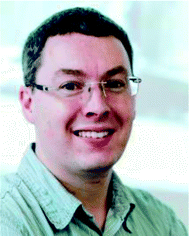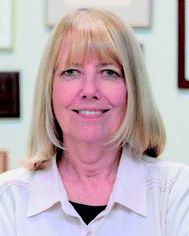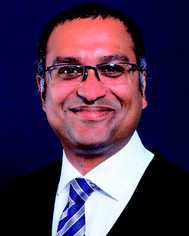Introduction to the special issue in honour of Prof. John Kilner’s 75th birthday
Stephen J.
Skinner
 *a,
Viola
Birss
*a,
Viola
Birss
 b,
Jennifer
Rupp
b,
Jennifer
Rupp
 c and
Roger A.
De Souza
c and
Roger A.
De Souza
 d
d
aDepartment of Materials, Imperial College London, Exhibition Road, London SW7 2AZ, UK. E-mail: s.skinner@imperial.ac.uk
bDepartment of Chemistry, University of Calgary, 2500 University Drive NW, Calgary, Alberta, Canada T2N 1N4. E-mail: birss@ucalgary.ca
cDepartment of Materials Science and Engineering, Massachusetts Institute of Technology, 77 Massachusetts Avenue, Cambridge, MA 02139, USA. E-mail: jrupp@mit.edu
dInstitute of Physical Chemistry, RWTH Aachen University, 52056 Aachen, Germany. E-mail: desouza@pc.rwth-aachen.de
This special issue of Journal of Materials Chemistry A celebrates the achievements of Professor John Kilner on the occasion of his 75th birthday. John is a materials scientist whose broad interests span the physical sciences with a focus on energy materials and the use of advanced ion beam techniques to understand key transport processes in such systems. John began his career with a degree in physics from the University of Birmingham, before completing his PhD in Metallurgy at the same institution under the supervision of Professor Rex Harris. He then moved to the University of Leeds to work with Professor Sir Richard Brook on oxygen-ion conduction in oxides,1 before moving to Imperial College London in 1979 as a postdoctoral researcher within the Wolfson Unit for Solid State Ionics under the guidance of the late Professor Brian Steele, MBE. At Imperial College London John promoted the development of solid oxide fuel cells and performed pioneering work on developing techniques to unambiguously determine the kinetics of mass transport processes in solids.2 John was instrumental in translating his work on solid oxide cells into technological solutions, founding, with Profs. B. C. H. Steele, A. Atkinson and N. P. Brandon, the Imperial College spin-out company, Ceres Power,3 which is now the internationally leading supplier of metal supported intermediate temperature solid oxide fuel cells.
During his career, John has made numerous seminal contributions to the broad field of Energy Materials, advancing the fundamental understanding of critical processes in solid state batteries and solid oxide cells, through his pioneering work on methods to directly measure the ion transport in solids. His work has transformed our understanding of the kinetics of oxygen surface exchange and diffusion in solids, of cation segregation processes at surfaces, of transport along and across grain boundaries, as well as of the effect of strain on ion mobility.
John has the ability to explain complex phenomena in a clear and inspiring manner, as evidenced in the undergraduate lecture courses he gave (for instance, on defect chemistry, electroceramics and dielectrics materials), and in the many plenary and invited talks he has given. It is also evident in the fantastic supervision he provided to over 40 PhD students and over 40 postdoctoral scholars.
Throughout his career John has been highly collaborative, welcoming numerous visiting researchers to his group, many of whom have gone on to be longstanding collaborators and international leaders in their fields. For many years John has maintained positions at CICEnerginune, Vitoria, Spain and the International Institute for Carbon Neutral Energy Research at Kyushu University, Japan. These collaborations have been extremely productive with fundamental new insights into the surface chemistry of La0.6Sr0.4CoO3−δ determined through the application of low-energy ion scattering (DOI: 10.1039/c5ta05279c), determination of fast ion transport in double perovskites as new solid oxide fuel cell cathodes (DOI: 10.1039/b704320a) and has provided new mechanistic insights into ion transport (DOI: 10.1039/c0ee00717j) as some examples.
In addition to the contributions that John has made, and continues to make, in the area of solid oxide cells, he has also made significant contributions to the fields of sensors, batteries and permeation membranes. His recent work has focused on providing unique insights into the development of Li conducting garnet type solid state electrolytes,4 including a focus on processing of these materials and understanding the impact of humidity on function and stability.5
As acknowledgement of his outstanding contributions John has been internationally recognised with the award of the Daiwa Adrian Prize for Scientific Collaboration 2016; the Somiya Award of International Union of Materials Research Societies 2012; Platinum Medal of the IOM3, 2012; Royal Society Armourers and Brasiers Award, 2005; Verulam Medal of the IOM3, 2005 and the Schoenbein Medal of the European Fuel Cell Forum, 2004.
On the occasion of his 75th Birthday we are delighted to have compiled this Special Issue of Journal of Materials Chemistry A, with contributions from friends and colleagues worldwide, covering the range of energy materials that John has devoted his career to, and reflecting the continuing growth of interdisciplinary research to tackle the challenges associated with the transition to zero pollution energy technologies.
References
- J. A. Kilner and R. J. Brook, Solid State Ionics, 1982, 6, 237–252 CrossRef CAS.
- J. A. Kilner, B. C. H. Steele and L. Ilkov, Solid State Ionics, 1984, 12, 89–97 CrossRef CAS.
- B. C. H. Steele, A. Atkinson, J. A. Kilner, N. P. Brandon and R. A. Rudkin, UK Pat., GB2368450, 2004 Search PubMed.
- E. E. Jay, M. J. D. Rushton, A. Chroneos, R. W. Grimes and J. A. Kilner, Phys. Chem. Chem. Phys., 2015, 17, 178–183 RSC.
- C. Bernuy-Lopez, W. Manalastas, J. M. L. del Amo, A. Aguadero, F. Aguesse and J. A. Kilner, Chem. Mater., 2014, 26, 3610–3617 CrossRef CAS.
| This journal is © The Royal Society of Chemistry 2022 |




